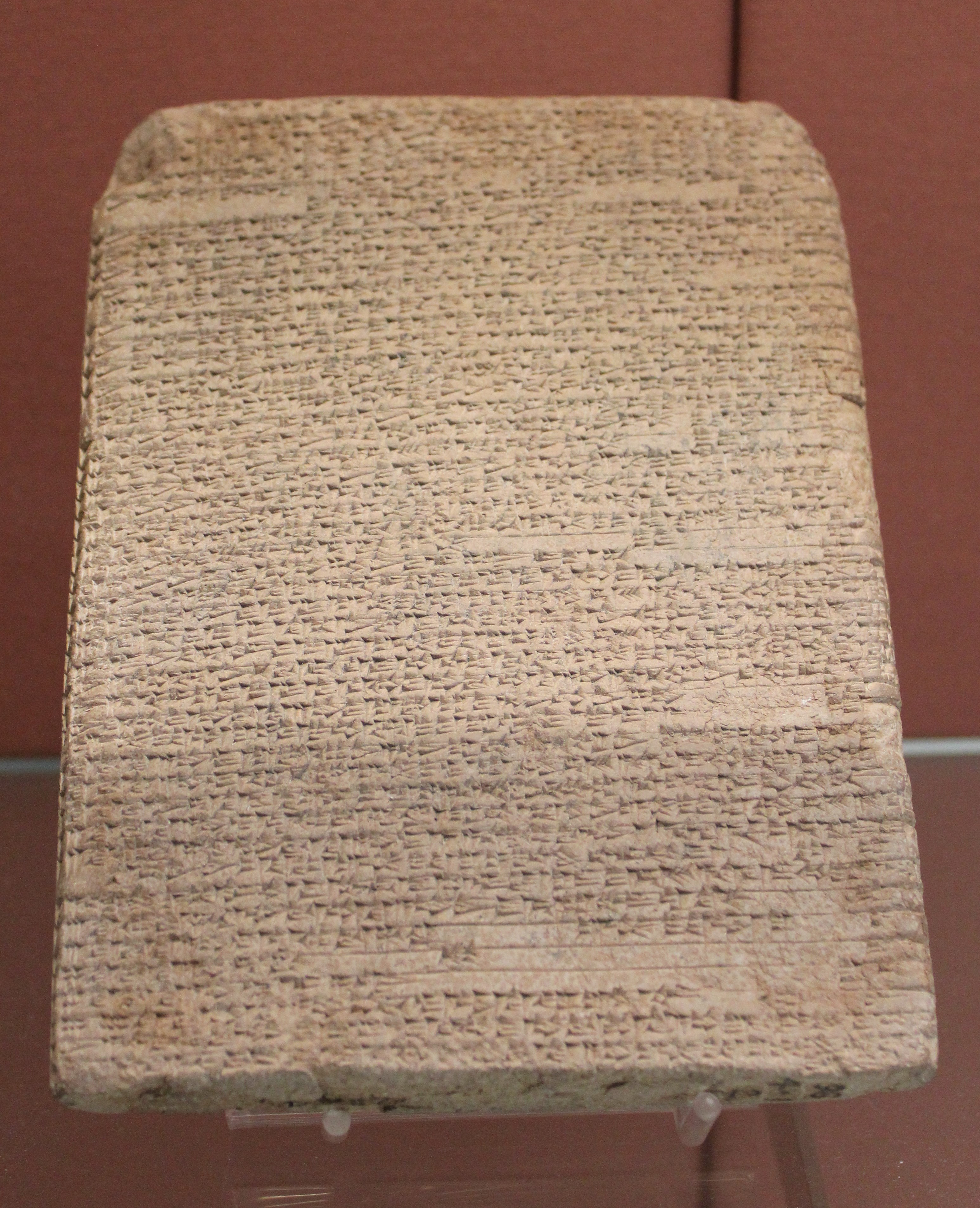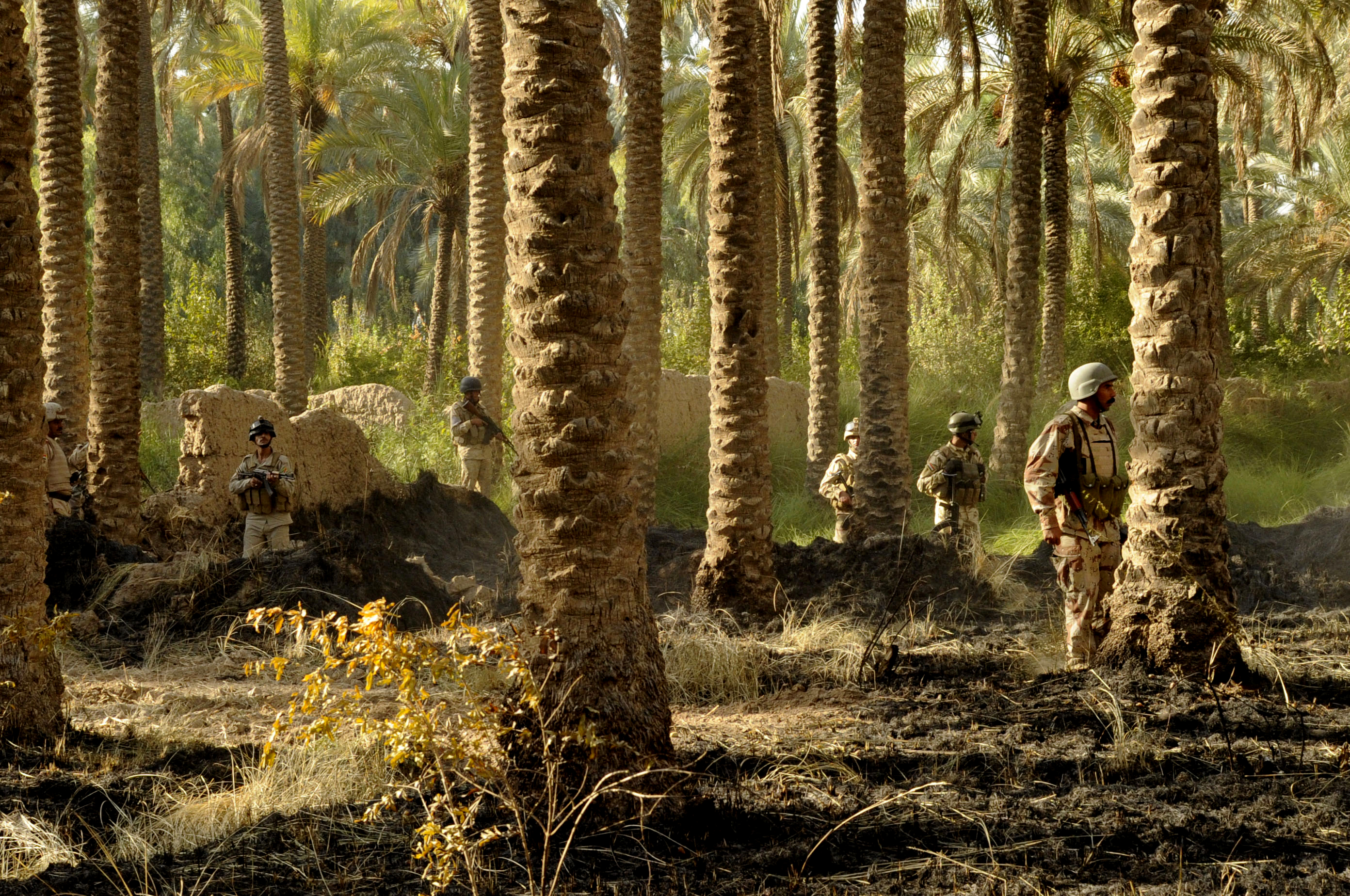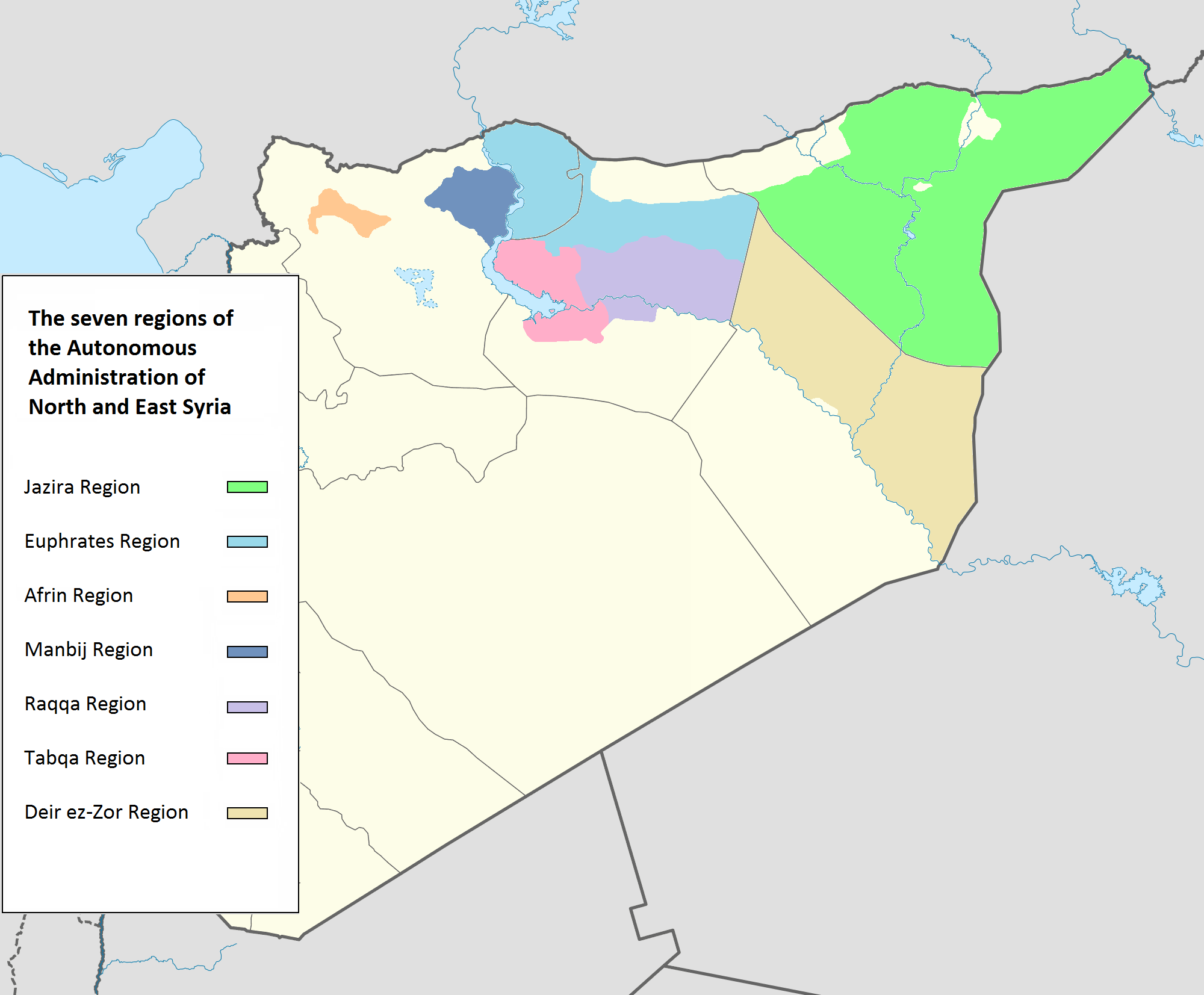|
Tell Yelkhi
Tell Yelkhi, is an ancient Near East archaeological site in Diyala Governorate (Iraq). It was examined as part of the Hemrin Dam, Hamrin Dam salvage excavation before it flooded. Other sites a part of that rescue excavation included, Me-Turan, Tell Gubah, Tell Songor, Tellul Hamediyat, Tell Rubeidheh, Tell Madhur, Tell Imlihiye, Tell Rashid, Tell Saadiya and Tell Abada. Some of these sites, including Tell Yelkhi, periodically emerge from the water. The site of Tell Yelhi was settled in the early 3rd millennium BC and occupation continued through the Kassite period late in the 2nd millennium BC. Its name in ancient times is not yet known though Awalki (known during Akkadian, Ur III, and Old Babylonian periods) has been suggested. Archaeology The oval mound (220 meters by 170 meters) rises about 12 meters above the plain, having two peaks, one lower than the other, and covers an area of about 4 hectares. The edges of main mound have eroded somewhat, removing some Level I Kassite r ... [...More Info...] [...Related Items...] OR: [Wikipedia] [Google] [Baidu] |
Diyala Governorate
Diyala Governorate ( ) or Diyala Province is a Governorates of Iraq, governorate in northeastern Iraq. Provincial Government *Governor: Muthanna al-Tamimi *Deputy Governor: Mohammed Jassim al-Jubouri Council Geography Diyala Governorate extends to the northeast of Baghdad as far as the Iran–Iraq border, Iranian border. Its Capital (political), capital is Baqubah. It covers an area of 17,685 square kilometres (6,828 sq mi). A large portion of the province is drained by the Diyala River, a major tributary of the Tigris. Because of its proximity to two major sources of water, Diyala's main industry is agriculture, primarily Phoenix dactylifera, dates grown in large groves. The province also contains one of the largest olive groves in the Middle East. It is also recognized as the Orange (fruit), orange capital of the Middle East. The Hamrin Mountains pass through the governorate. Population The governorate is home to a diverse population of Arabs, Kurds and Ira ... [...More Info...] [...Related Items...] OR: [Wikipedia] [Google] [Baidu] |
Eshnunna
Eshnunna (also Esnunak) (modern Tell Asmar in Diyala Governorate, Iraq) was an ancient Sumerian (and later Akkadian) city and city-state in central Mesopotamia 12.6 miles northwest of Tell Agrab and 15 miles northwest of Tell Ishchali. Although situated in the Diyala Valley northwest of Sumer proper, the city nonetheless belonged securely within the Sumerian cultural milieu. It is sometimes, in very early archaeological papers, called Ashnunnak or Tupliaš. The tutelary deity of the city was Tishpak (Tišpak) though other gods, including Sin, Adad, and Inanna of Kiti ( Kitītum) were also worshiped there. The personal goddesses of the rulers were Belet-Šuḫnir and Belet-Terraban. History Early Bronze Inhabited since the Jemdet Nasr period, around 3000 BC, Eshnunna was a major city during the Early Dynastic period of Mesopotamia. It is known, from cuneiform records and excavations, that the city was occupied in the Akkadian period though its extent was noticeably le ... [...More Info...] [...Related Items...] OR: [Wikipedia] [Google] [Baidu] |
Cities Of The Ancient Near East
The earliest cities in history were in the ancient Near East, an area covering roughly that of the modern Middle East: its history began in the 4th millennium BC and ended, depending on the interpretation of the term, either with the conquest by the Achaemenid Empire in the 6th century BC or with that by Alexander the Great in the 4th century BC. The largest cities of the Bronze Age Near East housed several tens of thousands of people. Memphis in the Early Bronze Age, with some 30,000 inhabitants, was the largest city of the time by far. Ebla is estimated to have had a population of 40,000 inhabitants in the Intermediate Bronze age. Ur in the Middle Bronze Age is estimated to have had some 65,000 inhabitants; Babylon in the Late Bronze Age similarly had a population of some 50,000–60,000. Niniveh had some 20,000–30,000, reaching 100,000 only in the Iron Age (around 700 BC). In Akkadian and Hittite orthography, URU became a determinative sign denoting a city, or combine ... [...More Info...] [...Related Items...] OR: [Wikipedia] [Google] [Baidu] |
Kassite
The Kassites () were a people of the ancient Near East. They controlled Babylonia after the fall of the Old Babylonian Empire from until (short chronology). The Kassites gained control of Babylonia after the Hittite sack of Babylon in 1531 BC, and established a dynasty generally assumed to have been based first in that city, after a hiatus. Later rule shifted to the new city of Dur-Kurigalzu. By the time of Babylon's fall, the Kassites had already been part of the region for a century and a half, acting sometimes with Babylon's interests and sometimes against. There are records of Kassite and Babylonian interactions, in the context of military employment, during the reigns of Babylonian kings Samsu-iluna (1686 to 1648 BC), Abī-ešuh, and Ammī-ditāna. The origin and classification of the Kassite language, like the Sumerian language and Hurrian language, is uncertain, and, also like the two latter languages, has generated a wide array of speculation over the years, even ... [...More Info...] [...Related Items...] OR: [Wikipedia] [Google] [Baidu] |
Ibal-pi-el II
Ibal pi’el II was a king of the city kingdom of Eshnunna in ancient Mesopotamia. He reigned c. 1779–1765 BC). He was the son of Dadusha and nephew of Naram-Suen of Eshnunna. He conquered the cities of Diniktum and Rapiqum. With Ḫammu-rāpi of Babylon, and the Amorite king Shamshi-Adad I he besieged the kingdom of Malgium until its ruler bought them off with 15 talents of silver. He was a contemporary of Zimri-Lim of Mari, and formed powerful alliances with Yarim-Lim I Amud-pi-el of Qatanum, Rim-Sin I of Larsa and most importantly Hammurabi of Babylon, to appose the rise of Shamshi-Adad I in Assyria (on his northern border) who himself had alliances with Charchemish, Hassum and Urshu and Qatna. Some scholars have suggested the biblical king Amraphel may have been Ibal Pi-El II of Esnunna.Micael Roaf "Cambridge Atlas of Archaeology - king lists p 111 and pp 108-123. While others [...More Info...] [...Related Items...] OR: [Wikipedia] [Google] [Baidu] |
Cuneiform
Cuneiform is a Logogram, logo-Syllabary, syllabic writing system that was used to write several languages of the Ancient Near East. The script was in active use from the early Bronze Age until the beginning of the Common Era. Cuneiform scripts are marked by and named for the characteristic wedge-shaped impressions (Latin: ) which form their Grapheme, signs. Cuneiform is the History of writing#Inventions of writing, earliest known writing system and was originally developed to write the Sumerian language of southern Mesopotamia (modern Iraq). Over the course of its history, cuneiform was adapted to write a number of languages in addition to Sumerian. Akkadian language, Akkadian texts are attested from the 24th century BC onward and make up the bulk of the cuneiform record. Akkadian cuneiform was itself adapted to write the Hittite language in the early second millennium BC. The other languages with significant cuneiform Text corpus, corpora are Eblaite language, Eblaite, Elamit ... [...More Info...] [...Related Items...] OR: [Wikipedia] [Google] [Baidu] |
Kassite Dynasty
The Kassite dynasty, also known as the third Babylonian dynasty, was a line of kings of Kassite origin who ruled from the city of Babylon in the latter half of the second millennium BC and who belonged to the same family that ran the kingdom of Babylon between 1595 and 1155 BC, following the first Babylonian dynasty (Old Babylonian Empire; 1894-1595 BC). It was the longest known dynasty of that state, which ruled throughout the period known as " Middle Babylonian" (1595-1000 BC). The Kassites were a people from outside Mesopotamia, whose origins are unknown, although many authors theorize that they originated in the Zagros Mountains. It took their kings more than a century to consolidate their power in Babylon under conditions that remain unclear. Despite their external origin, the Kassite kings did not change Babylon's ancestral traditions and, on the contrary, brought order to the country after the turbulence that marked the end of the first dynasty. Not being great conquerors, ... [...More Info...] [...Related Items...] OR: [Wikipedia] [Google] [Baidu] |
First Sealand Dynasty
The First Sealand dynasty (URU.KÙKIWhere ŠEŠ-ḪA of King List A and ŠEŠ-KÙ-KI of King List B are read as URU.KÙ.KI), or the 2nd Dynasty of Babylon (although it was independent of Amorite-ruled Babylon), very speculatively c. 1732–1460 BC (short chronology), is an enigmatic series of kings attested to primarily in laconic references in the ''King Lists A'' and ''B'', and as contemporaries recorded on the Assyrian ''Synchronistic king list A.117''. Initially it was named the "Dynasty of the Country of the Sea" with Sealand later becoming customary. The dynasty, which had broken free of the short lived, and by this time crumbling Old Babylonian Empire, was named for the province in the far south of Mesopotamia, a swampy region bereft of large settlements which gradually expanded southwards with the silting up of the mouths of the Tigris and Euphrates rivers (the region known as ''mat Kaldi'' " Chaldaea" in the Iron Age). Sealand pottery has been found at Girsu, Uruk, and La ... [...More Info...] [...Related Items...] OR: [Wikipedia] [Google] [Baidu] |
Mitanni
Mitanni (–1260 BC), earlier called Ḫabigalbat in old Babylonian texts, ; Hanigalbat or Hani-Rabbat in Assyrian records, or in Ancient Egypt, Egyptian texts, was a Hurrian language, Hurrian-speaking state in northern Syria (region), Syria and southeast Anatolia (modern-day Turkey) with Indo-Aryan languages, Indo-Aryan Indo-Aryan superstrate in Mitanni, linguistic and political influences. Since no histories, royal annals or chronicles have yet been found in its excavated sites, knowledge about Mitanni is sparse compared to the other powers in the area, and dependent on what its neighbours commented in their texts. The Hurrians were in the region as of the late 3rd millennium BC. A king of Urkesh with a Hurrian name, Tupkish, was found on a clay sealing dated at Tell Mozan.Salvini, Mirjo. "The earliest evidences of the Hurrians before the formation of the reign of Mittanni." Urkesh and the Hurrians Studies in Honor of Lloyd Cotsen. Urkesh/Mozan Studies Bibliotheca Mesopotamic ... [...More Info...] [...Related Items...] OR: [Wikipedia] [Google] [Baidu] |
Isin-Larsa Period
The Isin-Larsa period (–1763 BCE, Middle Chronology, or 1961–1699 BCE, Short Chronology) is a phase in the history of ancient Mesopotamia, which extends between the end of the Third Dynasty of Ur and the conquest of Mesopotamia by King Hammurabi of Babylon leading to the creation of the First Babylonian dynasty. According to the approximate conventional dating, this period begins in 2025 BCE and ended in 1763 BCE. It constitutes the first part of the Old Babylonian period (2025–1595 BCE), the second part being the period of domination of the first dynasty of Babylon, which ends with the Sack of Babylon in 1595 BCE and the rise of the Kassites. The Third Dynasty of Ur immediately preceded the Isin-Larsa period, and its fall was due to the combined attacks of the Amorites from the west, and the Elamites from the east. As its name suggests, the Isin-Larsa period saw successively the emergence of two great powers in Lower Mesopotamia: the kingdom of Isin, which attempts to se ... [...More Info...] [...Related Items...] OR: [Wikipedia] [Google] [Baidu] |
Iraq
Iraq, officially the Republic of Iraq, is a country in West Asia. It is bordered by Saudi Arabia to Iraq–Saudi Arabia border, the south, Turkey to Iraq–Turkey border, the north, Iran to Iran–Iraq border, the east, the Persian Gulf and Kuwait to the Iraq–Kuwait border, southeast, Jordan to Iraq–Jordan border, the southwest, and Syria to Iraq–Syria border, the west. The country covers an area of and has Demographics of Iraq, a population of over 46 million, making it the List of countries by area, 58th largest country by area and the List of countries by population, 31st most populous in the world. Baghdad, home to over 8 million people, is the capital city and the List of largest cities of Iraq, largest in the country. Starting in the 6th millennium BC, the fertile plains between Iraq's Tigris and Euphrates rivers, referred to as Mesopotamia, fostered the rise of early cities, civilisations, and empires including Sumer, Akkadian Empire, Akkad, and Assyria. Known ... [...More Info...] [...Related Items...] OR: [Wikipedia] [Google] [Baidu] |






